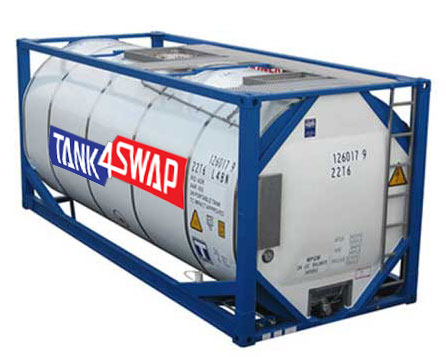Flexi and ISO tanks have become an increasingly popular method of transporting liquids and other materials, but like any other industry, it faces several challenges and issues. In this article, we will explore some of the main challenges and issues in the market for selling and renting Flexi and ISO tanks.
main challenges in the market for Flexi and ISO tanks
1. High Initial Costs
One of the main challenges in the market for selling and renting Flexi and ISO tanks is the high initial cost of these tanks. These tanks can cost tens of thousands of dollars to purchase, and businesses may be reluctant to invest in them, especially if they only need them for occasional use. This high initial cost can also make it difficult for new businesses to enter the market, as they may not have the capital to invest in these tanks.

2. Limited Availability
Another issue in the market for Flexi and ISO tanks is the limited availability of these tanks. While the demand for these tanks has increased in recent years, the supply has not kept up with this demand. This limited availability can make it difficult for businesses to find the tanks they need, especially if they need them quickly.
3.Lack of Standardization
Flexi and ISO tanks are not standardized, which can create problems for businesses that need to use different types of tanks for different materials. For example, some tanks may not be suitable for certain types of chemicals or liquids. Additionally, the lack of standardization can make it difficult for businesses to compare different tanks and make informed purchasing decisions.
4.Maintenance Costs
Another challenge in the market for selling and renting Flexi and ISO tanks is the maintenance costs associated with these tanks. While these tanks are designed to be durable, they do require regular maintenance and repairs to ensure they remain in good condition. These maintenance costs can add up over time, especially for businesses that own large fleets of tanks.
5.Liability and Insurance Issues
Another challenge in the market for Flexi and ISO tanks is liability and insurance issues. Businesses that use these tanks may face liability issues if the tanks are damaged or cause harm to others, and may need to purchase insurance to protect themselves against potential losses. For example, if a tank leaks during transportation, the business that owns the tank may be held liable for any damage caused by the leak. However, insurance for Flexi and ISO tanks can be expensive and difficult to obtain, especially if the tanks contain hazardous materials or are used in high-risk industries. Additionally, these tanks may require specialized insurance coverage, which can be expensive and difficult to obtain.
6.Regulatory Issues
Regulatory issues can also pose challenges for businesses that use Flexi and ISO tanks. These tanks are subject to various regulations and standards, such as the IMDG Code and ISO standards, as well as local and national regulations in different countries. Businesses must ensure that they comply with these regulations and standards, which can be time-consuming and costly. Additionally, regulatory requirements may vary depending on the type of material being transported, which can add additional complexity to the regulatory environment.For example, these tanks may need to meet specific safety standards, which can require additional testing and certification.

7.Competitive Pressure
Finally, the market for selling and renting Flexi and ISO tanks is becoming increasingly competitive. As demand for these tanks grows, more companies are entering the market, offering different types of tanks and pricing structures. This competitive pressure can make it difficult for businesses to differentiate themselves and stand out in the market.
8. Transportation and Logistics Challenges
Another challenge in the market for Flexi and ISO tanks is the transportation and logistics involved in moving these tanks. These tanks can be bulky and heavy, and require specialized equipment and expertise to transport them safely and efficiently. This can add additional costs and complications to the supply chain, and can make it difficult for businesses to transport their products in a timely and cost-effective manner.
9. Environmental Concerns
Flexi and ISO tanks can also pose environmental concerns, especially if they are not properly maintained or disposed of. These tanks may contain hazardous materials or chemicals, which can be harmful to the environment if they are released. Additionally, the manufacturing and disposal of these tanks can have an environmental impact, which can create additional challenges for businesses that are trying to operate sustainably.
10. International Trade Barriers
Finally, businesses that use Flexi and ISO tanks may also face international trade barriers, which can create additional challenges and complications. For example, different countries may have different regulations and standards for these tanks, which can make it difficult for businesses to navigate the international market. Additionally, trade disputes or geopolitical tensions can disrupt the supply chain, making it difficult for businesses to access the tanks they need.
11. Lack of Industry Standards
Another challenge in the market for Flexi and ISO tanks is the lack of industry standards for these tanks. While there are certain regulations and standards that apply to these tanks, such as the International Maritime Dangerous Goods (IMDG) Code and the International Organization for Standardization (ISO) standards, there is no universal standard that applies to all types of Flexi and ISO tanks. This lack of standardization can make it difficult for businesses to compare and evaluate different tanks, and can lead to confusion and uncertainty in the market.
Conclusion
The market for selling and renting Flexi and ISO tanks offers many benefits for businesses that need to transport liquids and other materials. These tanks are cost-effective, efficient, and flexible, and can help businesses save time and money in their supply chain operations. However, the market also presents several challenges and issues that businesses must navigate, including high initial costs, limited availability, lack of standardization, maintenance costs, liability and insurance issues, regulatory issues, competitive pressure, transportation and logistics challenges, environmental concerns, and international trade barriers. Despite these challenges, with careful planning and management, businesses can successfully navigate the market and enjoy the many benefits that Flexi and ISO tanks offer.

